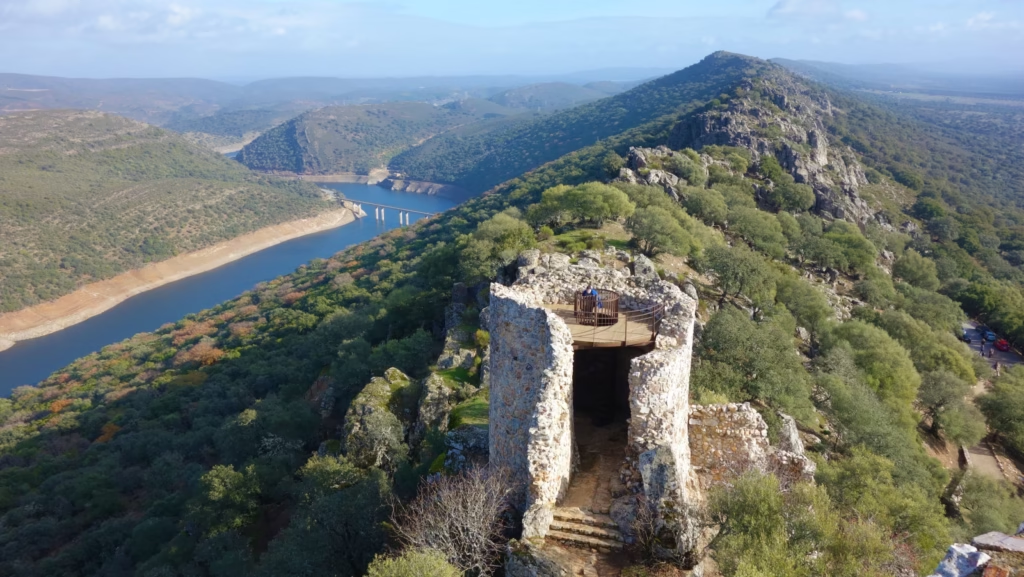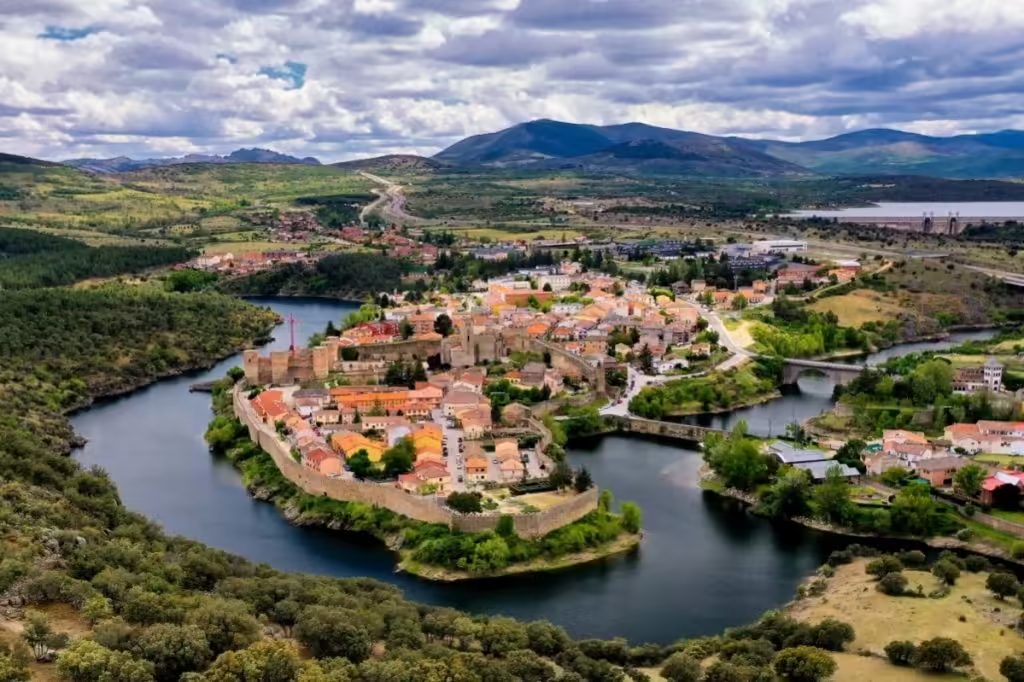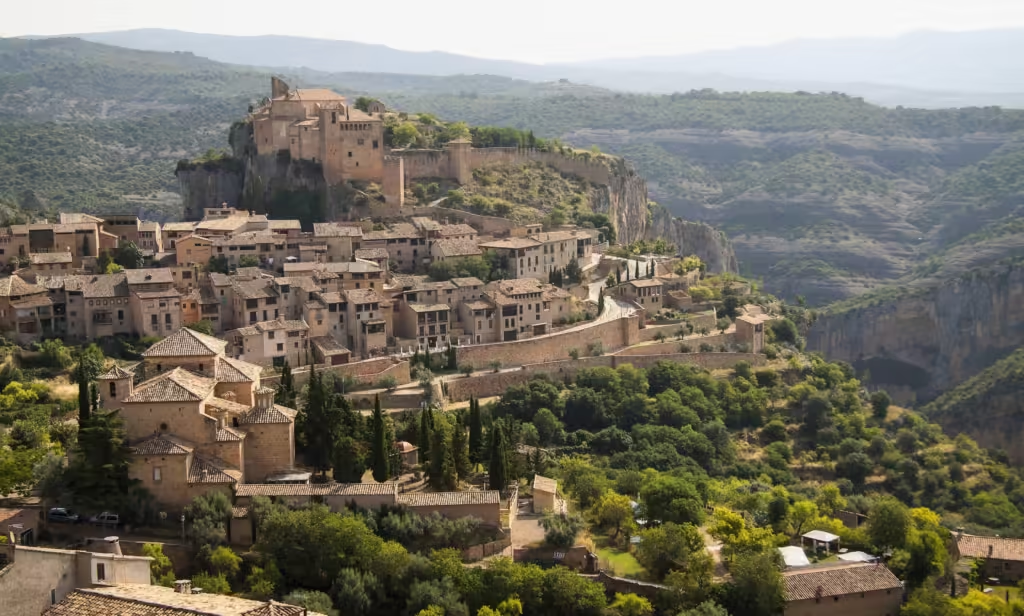Monfaque National Park is a hidden gem for nature lovers, situated in the scenic region of Extremadura in southwestern Spain. This protected area is renowned for its stunning landscapes, thriving wildlife, and rich cultural heritage. It offers a unique environment where visitors can enjoy hiking, birdwatching, and immersive cultural experiences. In this SEO-optimized guide, you will discover everything you need to know before planning a trip to this captivating destination. You will also learn about the best times to visit, the wildlife you can expect to see, and practical travel tips. Read on to discover why Monfaque National Park should be on every adventurer’s bucket list.

Location and Brief History
Monfaque National Park (often referred to by locals as “Parque Nacional de Monfaque”) is located in the province of Cáceres, near the Tagus River. The region boasts a Mediterranean climate, with hot summers and mild winters. This unique habitat offers a home to a diverse range of plant and animal species.
The park’s name is linked to its historical roots, with evidence of human settlement tracing back to prehistoric times. Ancient cave paintings have been found in nearby areas, highlighting the importance of this land to various civilizations. Centuries ago, these rugged terrains also served as natural fortresses during periods of conflict.
Why This National Park Matters
Monfaque National Park holds ecological, cultural, and historical significance. It protects endangered species, provides vital habitats for migratory birds, and celebrates Spain’s rich natural heritage. Its uniqueness has led to recognition at both national and international levels, making it a must-visit for eco-travelers and photographers who crave untouched beauty.
Unique Flora and Fauna of Monfaque National Park
Monfaque National Park stands out because of its Mediterranean forest and scrubland. You will find holm oaks, cork oaks, and juniper forests throughout the park, forming a lush habitat for numerous species. The biodiversity thrives here, thanks to careful preservation and sustainable tourism practices.
Iconic Bird Species
Birdwatching is one of the primary draws for visitors. Monfaque National Park is home to some of Spain’s most extraordinary birds:
Spanish Imperial Eagle: This raptor is considered endangered, making sightings incredibly special.
Egyptian Vulture: Often spotted soaring above rocky cliffs, this bird is a symbol of longevity in the region.
Black Stork: These elegant birds return to the park every year, drawn by the abundance of river fish and nesting areas.
Griffon Vulture: Large, majestic, and often seen in groups, they glide effortlessly across the park’s canyons.
Mammals and Reptiles
While birds often steal the spotlight, Monfaque also hosts a variety of mammals and reptiles:
Iberian Lynx (Lynx pardinus): Sightings are rare but thrilling. Conservation efforts are helping this iconic species rebound in southwestern Spain.
Wild Boar: Known for their agility, they thrive in the dense scrubland and feed on acorns, roots, and small insects.
Deer Species: Red deer and fallow deer often graze in open fields, offering pleasant wildlife-viewing opportunities.
European Pond Turtle: You may spot these turtles basking on the banks of the park’s rivers.
Best Time to Visit Monfaque National Park
Choosing the right season ensures you experience the park at its best. Different times of year highlight different aspects of its ecological wonders:
Spring (March to May)
Spring in Monfaque National Park is mild, with temperatures averaging around 15–20°C (59–68°F). This season is perfect for wildflower blooms. Birdwatchers will also find a plethora of migratory species returning to nest and feed.Summer (June to August)
Summers in southwestern Spain can be hot, with temperatures reaching 35°C (95°F). However, early mornings and late afternoons remain pleasant. Water levels are lower, making it easier to spot wildlife at watering holes.Autumn (September to November)
Temperatures begin to drop, offering comfortable days ideal for hiking. The foliage changes color, revealing striking shades of gold and red. Bird activity remains high, especially raptor sightings along the park’s rocky crags.Winter (December to February)
Winters are mild, though occasional rainfall can occur. The park is quieter during this season, which can be appealing if you prefer solitude. Wildlife sightings remain common, particularly around riverbanks and forested areas.
Top Activities and Attractions
Monfaque National Park is more than just a scenic spot. It is an outdoor enthusiast’s playground, where you can immerse yourself in activities that highlight the region’s natural and cultural attributes.
Birdwatching Tours
Guided birdwatching tours are a popular choice. Expert guides will take you to well-known vantage points, such as Salto del Gitano (a famous cliff area), ensuring you have the best chance of spotting imperial eagles, vultures, and storks. Most tours provide binoculars, but bringing your own is always recommended for maximum clarity.
Scenic Hiking Trails
A network of well-marked hiking trails crisscrosses the park. These paths range from easy walks suitable for families to more challenging hikes for experienced trekkers. As you traverse the park, you will encounter breathtaking viewpoints, dense forests, and tranquil riverbanks.
Popular Trails
Cerro Gimio Route: This moderate trail offers sweeping vistas of the Tagus River.
La Tajadilla Trail: Known for its birdwatching opportunities and quiet woodland areas.
Castle of Monfaque Hike: Takes you to the ruins of an ancient fortress, providing a glimpse into the area’s past.
Wildlife Photography
Monfaque National Park is a dream destination for wildlife photographers. The diverse bird species, coupled with dramatic landscapes, allows for captivating images. Early mornings and late afternoons offer the best lighting for photography. You might catch golden rays framing the silhouettes of vultures in flight or the serene reflections of oaks in the river.
Kayaking and Canoeing
The Tagus River runs through the park, providing opportunities for water-based activities. Kayaking and canoeing tours allow you to explore serene sections of the river, often leading to hidden coves and inlets. This adventure offers a different perspective, revealing wildlife that sticks close to the water’s edge.
Cultural Highlights Around Monfaque National Park
Although the park is famous for its natural elements, the surrounding region of Extremadura has a rich cultural tapestry. Local towns and villages offer an authentic glimpse into rural Spanish life.
Traditional Festivals
Small towns near Monfaque observe local festivities throughout the year. These events often include folk music, dancing, and religious ceremonies that date back centuries. If you plan your trip around one of these festivals, you’ll gain a deeper appreciation for the region’s cultural heritage.
Historical Landmarks
Several historical landmarks sit on the fringes of the park:
Monfaque Castle Ruins: The remains of a fortress that once guarded strategic routes in medieval times.
Roman Bridges and Roads: Evidence of ancient Roman occupation can be found in the region, offering insights into its long, storied past.
Local Churches: Many of the small towns feature churches built in Gothic or Romanesque styles.
Local Gastronomy
Rural Extremadura cuisine is hearty and flavorful. Dishes often include ibérico pork, local cheeses, and seasonal produce. Traditional stews, sausages, and breads provide nourishment after a day of exploration. Some restaurants near Monfaque also serve game meats, further reflecting the region’s hunting traditions.
Accommodation Options: Where to Stay
Finding the right place to stay can greatly enhance your experience of Monfaque National Park. Options range from rustic campsites to cozy rural hotels.
Rural Guesthouses (Casas Rurales)
Many local residents have adapted their homes into guesthouses, offering warm hospitality and home-cooked meals. These properties often feature traditional Spanish architecture.Eco-Friendly Lodges
Eco-lodges emphasize sustainability by using solar power and recycled materials. Staying at one helps support conservation efforts in and around the park.Campsites
Designed for adventurous travelers, campsites near the Tagus River are popular among those who love to fall asleep to the sounds of nature. Basic amenities such as showers, restrooms, and communal cooking areas are typically available.Boutique Hotels and Paradores
If you prefer upscale comfort, boutique hotels or historic inns (paradores) are excellent choices. They offer modern amenities, gourmet dining, and scenic views, ensuring a luxurious stay.
Dining in and Around the Park
Sampling local gastronomy is an essential part of visiting Monfaque. Traditional dishes feature local products, many of which are grown or raised in the region.
Must-Try Dishes
Migas Extremeñas: A traditional dish made from bread crumbs, garlic, paprika, and often served with meats or vegetables.
Jamón Ibérico: Cured ham from local black Iberian pigs. It is prized for its flavor and unique marbling.
Torta del Casar: A soft, creamy cheese produced in the Cáceres region. It pairs excellently with rustic bread.
Local Stews: Many stews use game meats, chickpeas, and fresh vegetables. They offer comforting flavors after a long hike.
Dining Tips
Mealtimes in Spain are typically later than in other countries. Lunch (comida) often starts around 1:30–2:00 PM, while dinner (cena) may begin at 9:00–10:00 PM. Many restaurants close in the late afternoon for siesta, so plan your meals accordingly.
Practical Travel Tips and Park Regulations
To fully enjoy Monfaque National Park, it is vital to follow regulations and respect the environment. Here are a few essential tips:
Permits and Fees
Some activities, such as kayaking or special birdwatching tours, may require permits. Check official park websites or visitor centers for up-to-date information.Guided Tours
Hiring a certified guide can enrich your experience. You’ll gain insights into local wildlife behaviors, geology, and cultural lore that you might otherwise miss.Dress Appropriately
Wear comfortable clothing and sturdy shoes. If visiting in summer, carry enough water, sunscreen, and a hat for sun protection.Respect Wildlife
Observe animals from a safe distance and avoid disturbing their natural behaviors. Do not leave any trash behind.Stay on Marked Trails
Venturing off designated paths can harm fragile ecosystems and put you at risk, especially near cliffs or dense undergrowth.
Environmental Conservation Efforts
Monfaque National Park represents a crucial habitat for endangered species and migrating birds. Conservation projects focus on:
Habitat Restoration: Efforts include reforestation with native trees, erosion control, and river cleanup.
Species Monitoring: Researchers keep track of bird populations, particularly vultures and eagles, to ensure sustainable growth.
Community Engagement: Local communities often participate in conservation programs, encouraging responsible tourism and stewardship of natural resources.
Sustainable Tourism: Regulations limit visitor numbers during high season to prevent overcrowding and environmental damage.
These combined efforts aim to secure a balanced future where wildlife, ecosystems, and human communities prosper together.
FAQs About Monfaque National Park
Below are some common questions travelers ask before visiting Monfaque National Park. These answers will help you plan your trip smoothly and make the most of your time there.
1. How do I get to Monfaque National Park?
Many visitors choose to drive from Madrid or other major Spanish cities. The park is approximately a three-hour drive from Madrid via the A-5 highway. If you prefer public transport, regional buses connect major towns in Extremadura with smaller villages near the park. Check bus schedules in advance to ensure they align with your itinerary.
2. Is a guided tour necessary, or can I explore on my own?
You can explore on your own using well-marked trails and visitor maps. However, a guided tour offers expert knowledge about bird habitats, local flora, and hidden viewpoints. Hiring a local guide also supports community-based tourism initiatives.
3. What type of clothing and gear should I bring?
Comfortable, breathable clothing is ideal. In warmer months, opt for light shirts, shorts or hiking pants, and sturdy footwear. A hat, sunglasses, and sunscreen are essential. If you plan on birdwatching or wildlife spotting, bring binoculars and a camera with zoom capabilities.
4. Are there entrance fees to the park?
Monfaque National Park itself does not typically charge an entrance fee. However, certain activities, such as guided tours or canoe rentals, may have associated costs. Confirm with local tour operators or the park’s official website.
5. Is the park suitable for family visits?
Yes, Monfaque National Park offers family-friendly hiking paths and educational programs. The variety of bird species and easy-to-navigate trails can spark a child’s interest in nature, making it a great destination for all ages.
6. Can I camp anywhere in the park?
Designated campsites or authorized camping areas are recommended for overnight stays. Wild camping is generally prohibited to protect the environment and minimize disturbances to wildlife.
7. What if I want to visit nearby attractions?
Extremadura is rich in history and culture. You can explore nearby towns like Plasencia or Trujillo, famous for their medieval architecture and gastronomic offerings. Many travelers combine a trip to Monfaque with a broader tour of Spain’s southwestern provinces.
Conclusion
Monfaque National Park is a natural haven, offering breathtaking views, diverse wildlife, and a glimpse into rural Spanish culture. The park’s commitment to conservation and sustainable tourism ensures that future generations will also have the chance to marvel at its beauty. Whether you are a seasoned birdwatcher, a passionate hiker, or simply a traveler looking for an off-the-beaten-path destination, Monfaque delivers an unforgettable experience.
Plan your journey with care, respect the park’s regulations, and immerse yourself in the charm of Extremadura. Be sure to savor the local cuisine, explore historical sites, and take part in traditional festivals if possible. By doing so, you will create memories that last a lifetime while supporting the local communities and safeguarding an invaluable natural treasure. Safe travels, and enjoy the wonders of Monfaque National Park!

